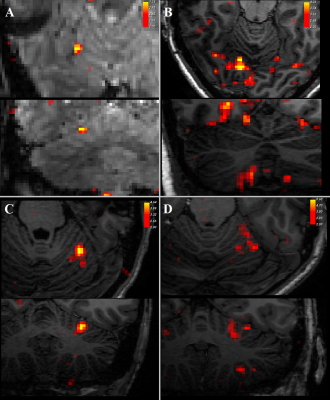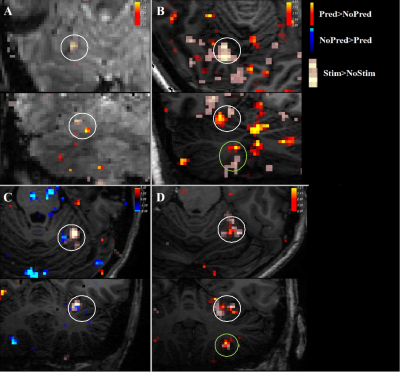Lenno R. P. T. Ruijters1, Nikos Priovoulos1, and Wietske van der Zwaag1
1Spinoza Centre for Neuroimaging, Amsterdam, Netherlands
1Spinoza Centre for Neuroimaging, Amsterdam, Netherlands
The digit region in
the human
cerebellum responds reliably to both prediction and experience of tactile
stimuli. With 7T fMRI, we could spatially separate responses to prediction and
experience of stimuli, to image zebrin-stripe related function.

Figure 3: Axial and coronal results from all
four subject in the Stimulation-NonStimulation conditions, focussing on the
cerebellar response region for each subject. A and B performed the task with
their right hand, C and D with their left hand. Images show consistent
responses in the ipsilateral anterior cerebellum for all
subjects and in the posterior lobe of the cerebellum for three (B,C,D).

Figure 4: Axial and coronal results from all
four subjects in the Prediction-NoPrediction conditions, focussing on the cerebellar
response region in the anterior lobe (White circles). Responses are overlaid on
top of the Stimulation response clusters (greyed out). NB that in C, the
response is negative. The Prediction responses border the Stimulation responses
reliably, but only weakly overlap. These results match our hypothesis. Green
circles highlight clusters in the posterior lobe for subject B and D.